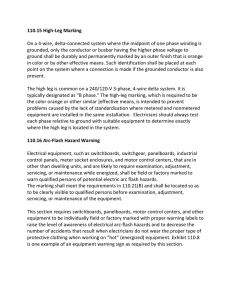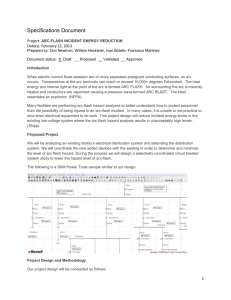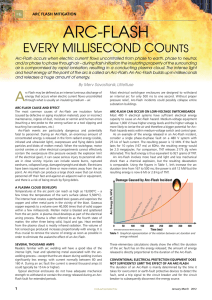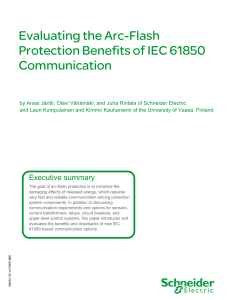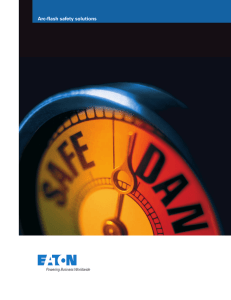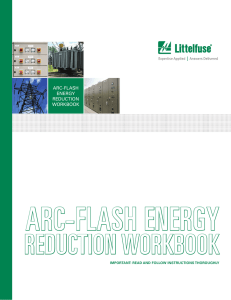Arc-Flash Hazard Analysis
advertisement
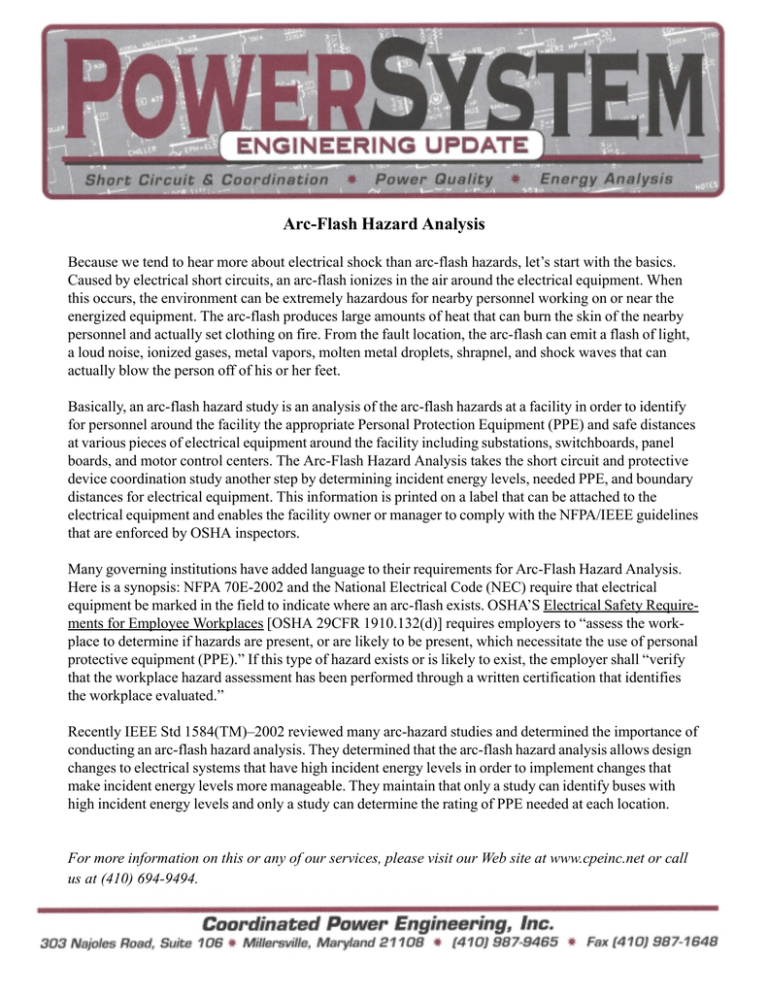
Arc-Flash Hazard Analysis Because we tend to hear more about electrical shock than arc-flash hazards, let’s start with the basics. Caused by electrical short circuits, an arc-flash ionizes in the air around the electrical equipment. When this occurs, the environment can be extremely hazardous for nearby personnel working on or near the energized equipment. The arc-flash produces large amounts of heat that can burn the skin of the nearby personnel and actually set clothing on fire. From the fault location, the arc-flash can emit a flash of light, a loud noise, ionized gases, metal vapors, molten metal droplets, shrapnel, and shock waves that can actually blow the person off of his or her feet. Basically, an arc-flash hazard study is an analysis of the arc-flash hazards at a facility in order to identify for personnel around the facility the appropriate Personal Protection Equipment (PPE) and safe distances at various pieces of electrical equipment around the facility including substations, switchboards, panel boards, and motor control centers. The Arc-Flash Hazard Analysis takes the short circuit and protective device coordination study another step by determining incident energy levels, needed PPE, and boundary distances for electrical equipment. This information is printed on a label that can be attached to the electrical equipment and enables the facility owner or manager to comply with the NFPA/IEEE guidelines that are enforced by OSHA inspectors. Many governing institutions have added language to their requirements for Arc-Flash Hazard Analysis. Here is a synopsis: NFPA 70E-2002 and the National Electrical Code (NEC) require that electrical equipment be marked in the field to indicate where an arc-flash exists. OSHA’S Electrical Safety Requirements for Employee Workplaces [OSHA 29CFR 1910.132(d)] requires employers to “assess the workplace to determine if hazards are present, or are likely to be present, which necessitate the use of personal protective equipment (PPE).” If this type of hazard exists or is likely to exist, the employer shall “verify that the workplace hazard assessment has been performed through a written certification that identifies the workplace evaluated.” Recently IEEE Std 1584(TM)–2002 reviewed many arc-hazard studies and determined the importance of conducting an arc-flash hazard analysis. They determined that the arc-flash hazard analysis allows design changes to electrical systems that have high incident energy levels in order to implement changes that make incident energy levels more manageable. They maintain that only a study can identify buses with high incident energy levels and only a study can determine the rating of PPE needed at each location. For more information on this or any of our services, please visit our Web site at www.cpeinc.net or call us at (410) 694-9494.
